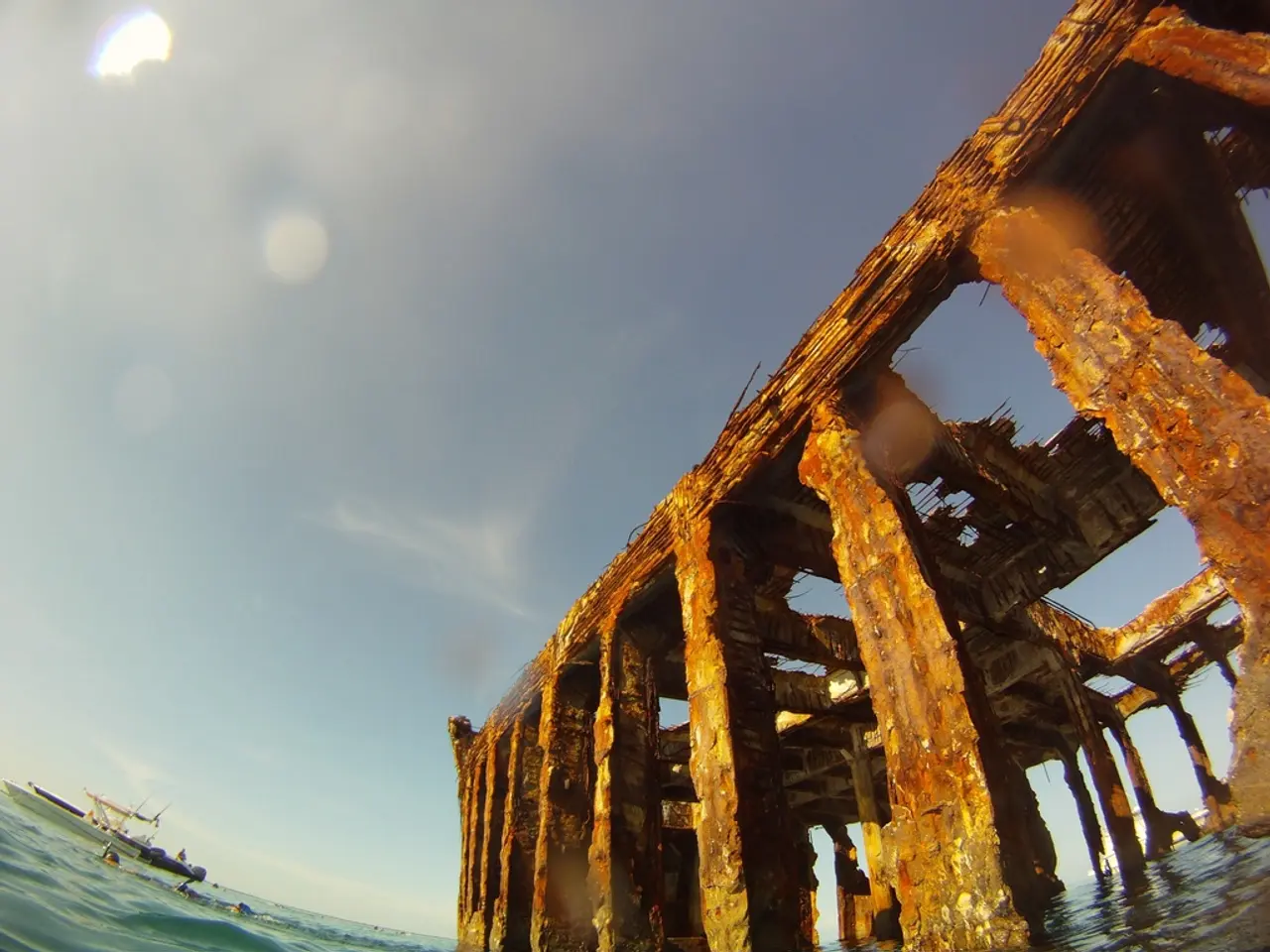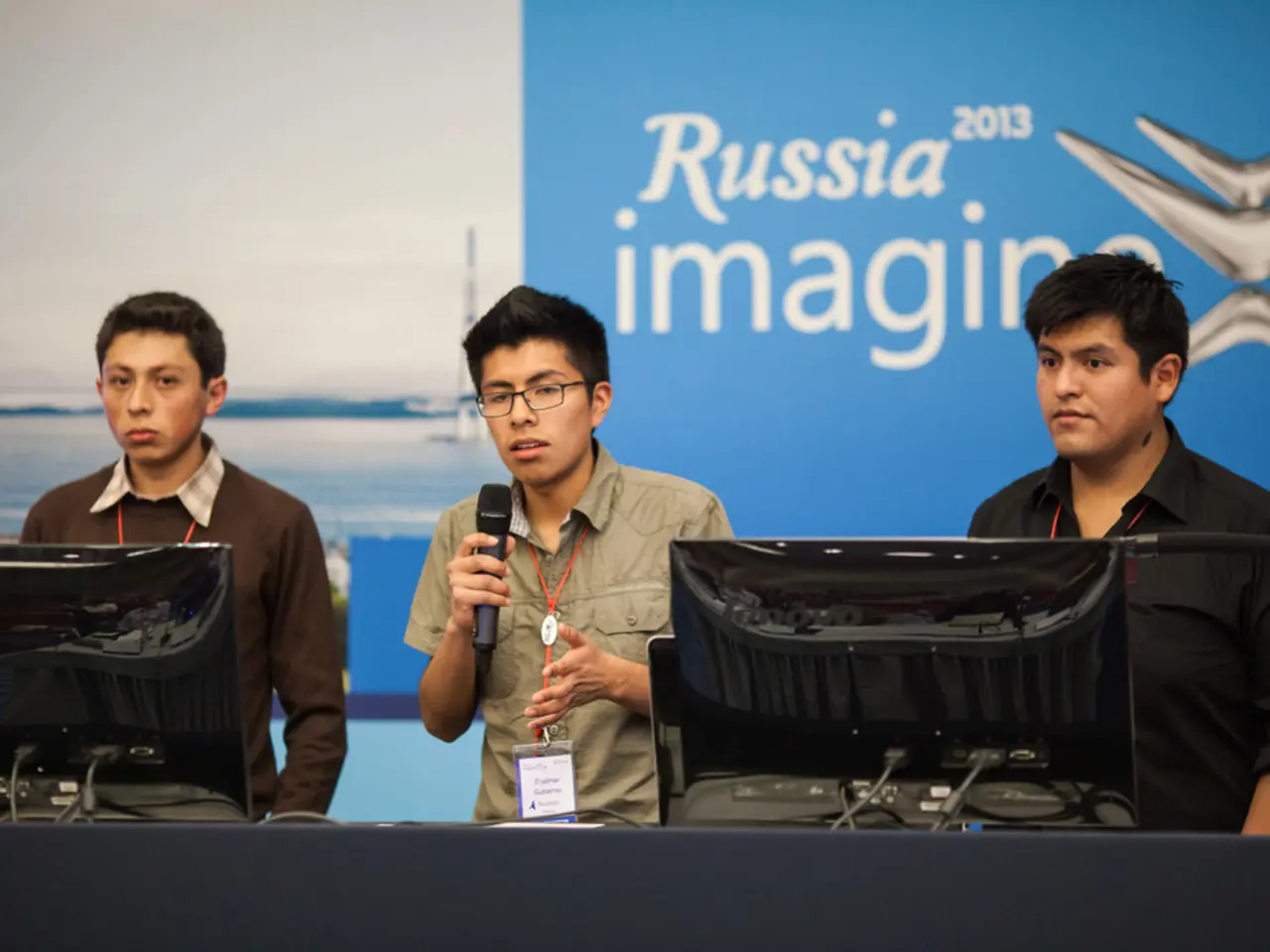Warships from Japan pay a long-overdue visit to Wellington, New Zealand, after an absence of approximately nine decades
Japan Deepens Strategic Ties with South Pacific Nations
Japan has recently strengthened its strategic ties with nations in the South Pacific through a series of military and diplomatic engagements. This move aims to deepen security cooperation and promote a "Free and Open Indo-Pacific" vision.
In a significant development, Japan's Mitsubishi Heavy Industries was awarded a contract to build ships for the Royal Australian Navy. This agreement is considered the biggest defense industry agreement between Japan and Australia, according to officials.
Japan's strategic engagement with the South Pacific is evident in the deployment of the Japan Maritime Self-Defense Force (JMSDF) ships to South Pacific ports. In a historic visit, JMSDF destroyers JS Ise and JS Suzunami docked in Wellington, New Zealand's capital, for the first time in almost 90 years. This visit, which occurred amid ongoing regional tensions, was part of a broader mission to strengthen ties with South Pacific countries and build cooperative security relationships.
The Japanese destroyers, accompanied by the New Zealand navy ship HMNZS Canterbury, arrived in Wellington from Sydney, where they had participated in war games involving New Zealand, Australia, and other countries.
The South Pacific region is increasingly contested by the world's major powers, with the waters surrounding New Zealand, Australia, and smaller Pacific Island countries becoming a site of fierce battle for influence. This contention has led to incidents such as live firing exercises by Chinese naval frigates in the Tasman Sea, causing alarm.
Japan's approach to the South Pacific involves combining military cooperation with economic statecraft, such as secure supply chain initiatives and infrastructure aid, to offer viable alternatives for development and security partnerships. This strategy is aimed at strengthening economic and technological cooperation, reinforcing Japan’s role as a reliable partner in infrastructure, defense industry, and sustainable development initiatives.
The enhanced military interoperability and presence of Japan and its partners in the South Pacific contribute to regional stability and serve as a counterbalance to Chinese influence. Japan's increasing strategic engagement with South Pacific nations reflects a multi-dimensional effort to build a network of security and economic partnerships aimed at ensuring regional balance, resilience, and shared prosperity in the face of shifting power dynamics.
Recently, New Zealand has been focusing on shoring up its strategic and military relations in Asia as part of a foreign policy reset. Work on a defense logistics agreement between New Zealand and Japan has started, intended to make it easier for the countries' militaries to work together.
The Japanese proposal for the contract to build Australian warships was deemed the best and cheapest by Australian officials. The Tasman Sea between New Zealand and Australia has seen increased military activity, with the recent live firing exercises by Chinese naval frigates causing concern.
The ambassador's main goal is the free and open Indo-Pacific, a framework that emphasizes transparency, rule of law, and multilateral partnerships across the region. Japan's strategic deepening in the South Pacific is a significant step towards achieving this goal.
In 2016, a Japanese ship visited New Zealand's largest city, Auckland. However, the last port visit to Wellington by a Japanese naval vessel was in 1936, according to New Zealand's military. The Wellington visit was a ceremonial one, but it underscores Japan's commitment to strengthening its ties with New Zealand and the wider South Pacific region.
Flights had to divert at short notice due to the live firing exercises by Chinese naval frigates in the Tasman Sea. These incidents highlight the importance of regional stability and the need for countries like Japan and New Zealand to work together to maintain peace and security in the South Pacific.
- Japan's military and diplomatic engagements in the South Pacific, as seen in the visit of Japanese destroyers to Wellington, New Zealand, are part of a broader strategy to promote general-news and crime-and-justice in the region, as well as counterbalance potential political influences.
- The strategic partnership between Japan and Australia, such as the defense industry agreement for Mitsubishi Heavy Industries to build ships for the Royal Australian Navy, is an essential aspect of the world politics involving the South Pacific region.
- The free and open Indo-Pacific vision, promoted by Japan through its deepening ties with South Pacific nations, includes art and culture as crucial elements of the cooperative relationships they aim to build, fostering shared prosperity and common cultural ground.








